Landland’s Balancing Act
Writer Maggie Ryan Sandford profiles the artists behind Landland, Jessica Seamans and Dan Black, up-and-comers whose intricately detailed design work mixes the fantastic and mundane, and does so with sly wit and thoughtful craftsmanship.
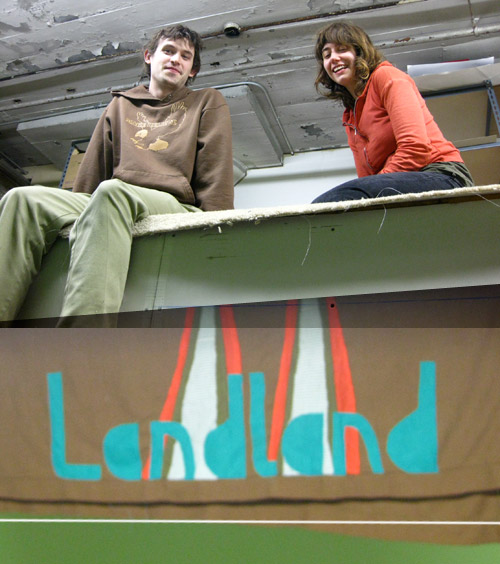
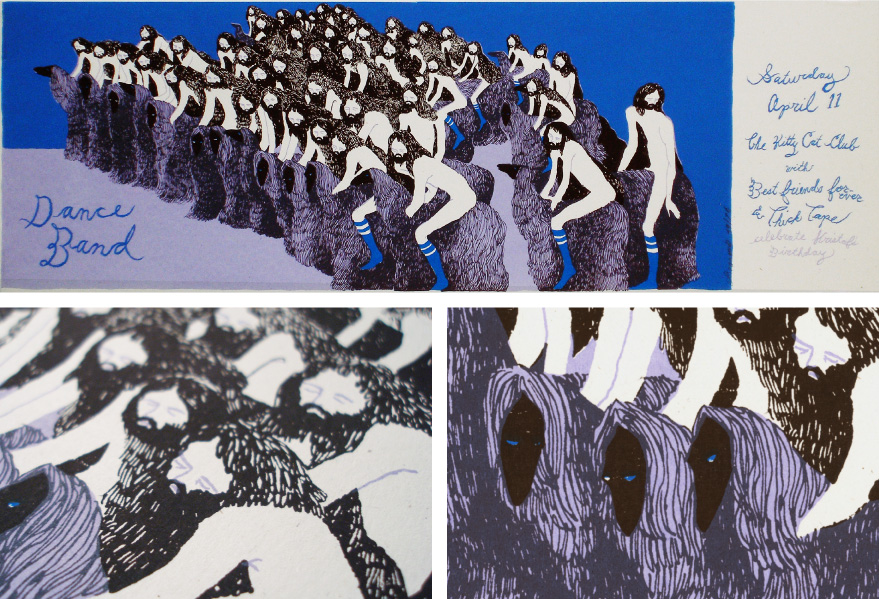
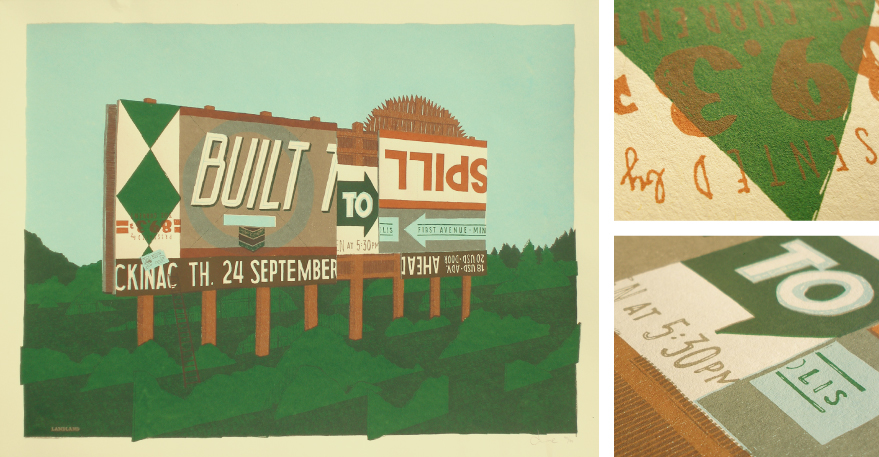
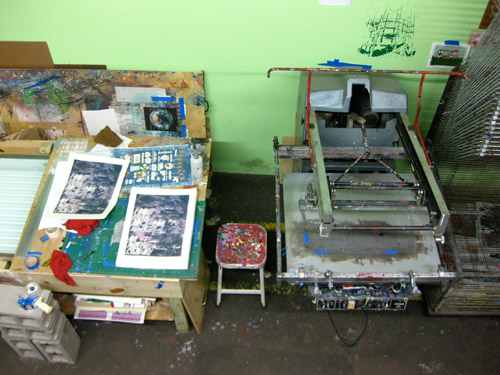
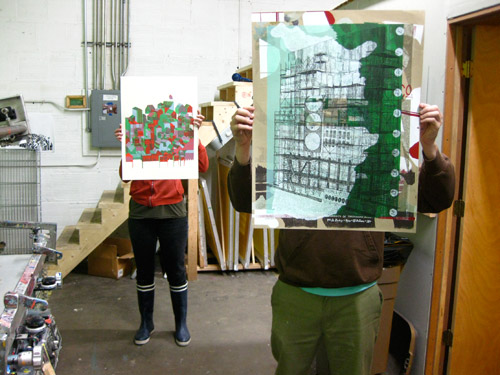
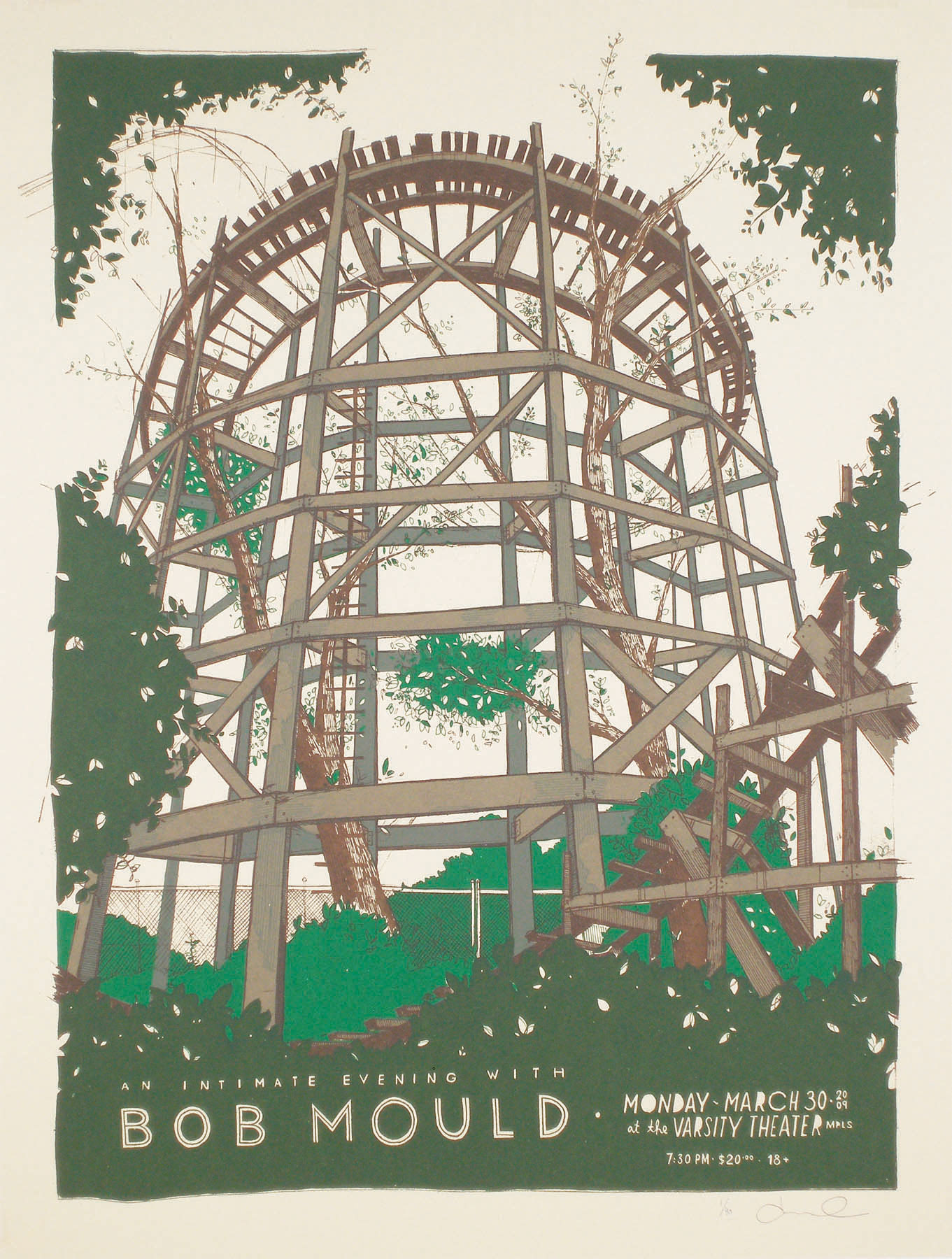
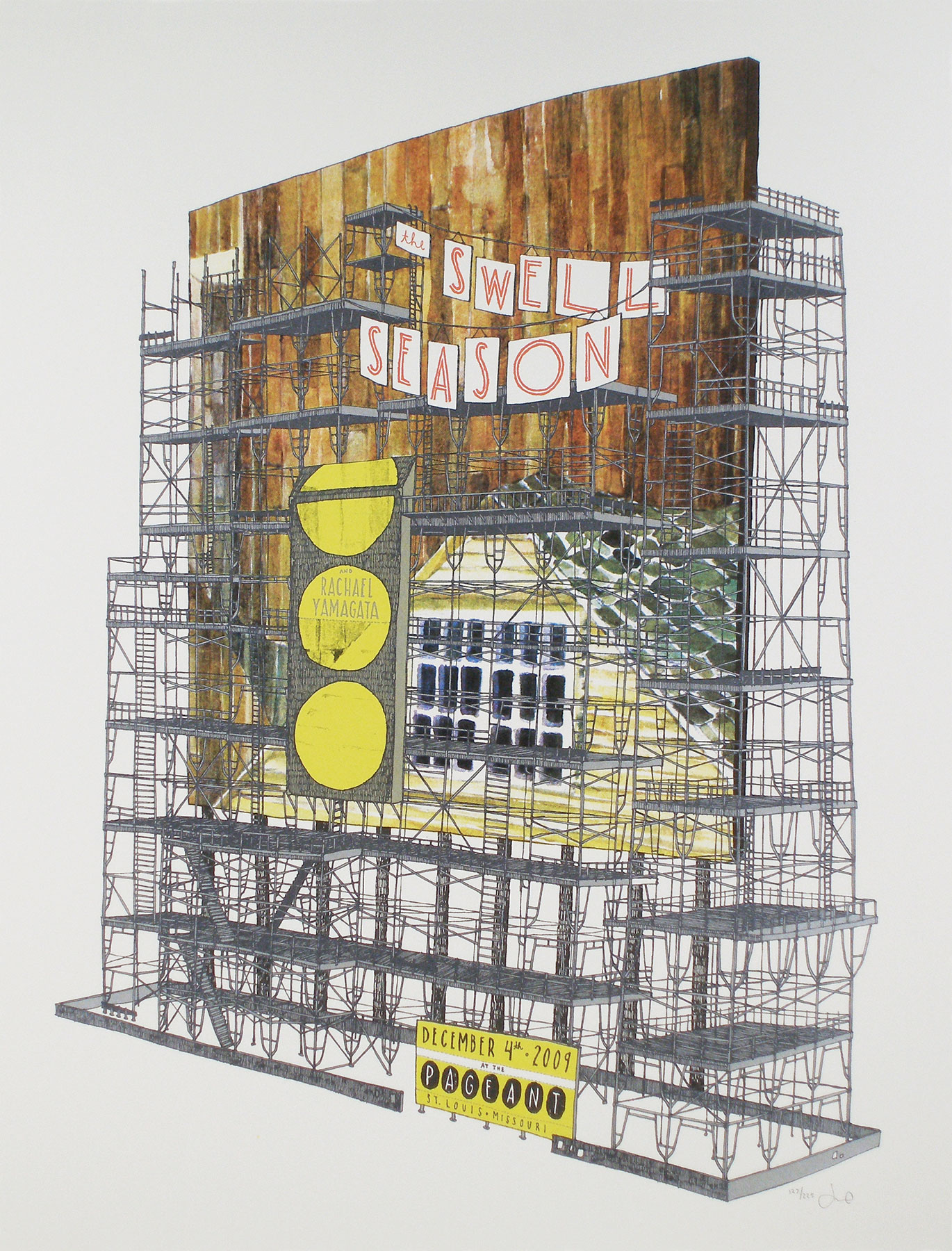
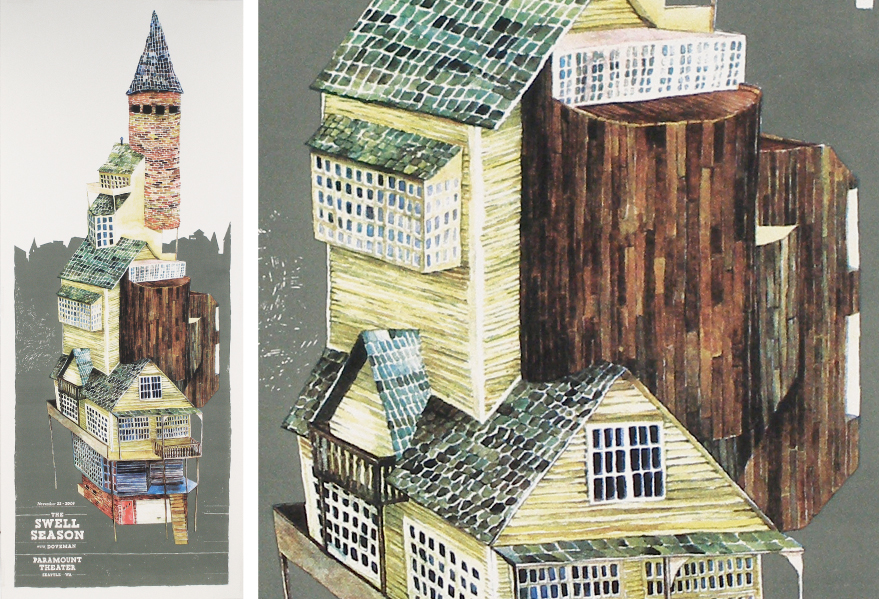
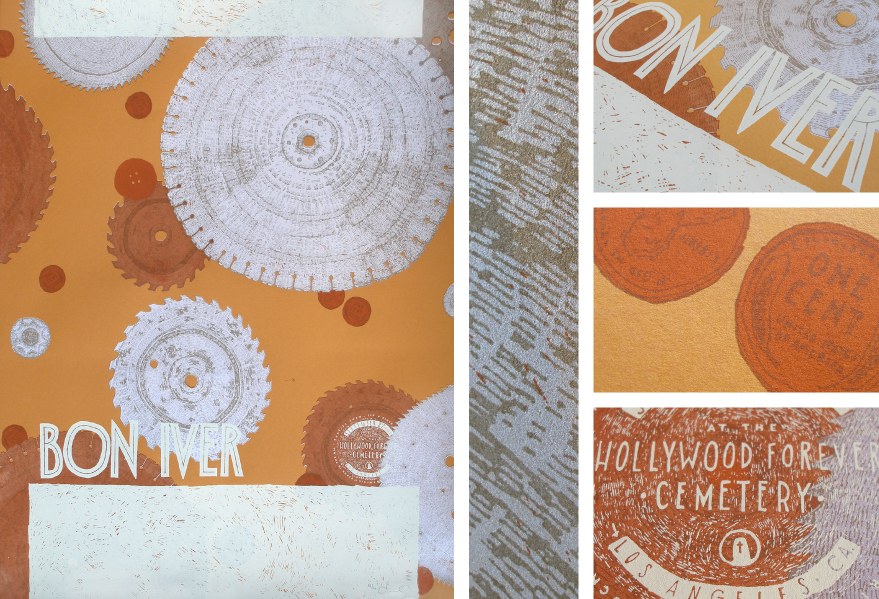
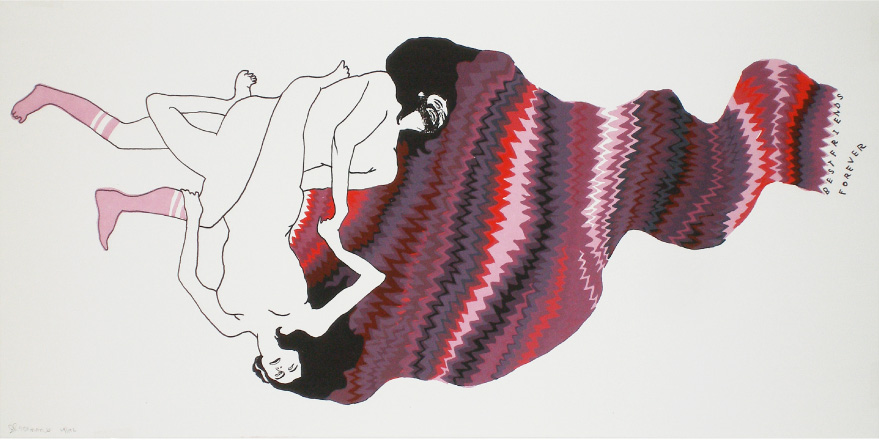
AH, MARCH. It’s a time of year when we Minnesotans become keenly aware of our precarious position: winter has started letting up, the thaw has begun, and yet we know in our hearts that before we can shed the woolen layers and welcome spring to stay, we’re in for another freeze. But we’re used to this way of life. We’re Middle-coasters, at home hanging in that careful balance between spring and winter, life and death, the lush and the desolate.
It’s appropriate, then, that March is the month to get to know Landland, a Minneapolis-based art-duo comprised of Dan Black and Jessica Seamans, who, like the true Midwesterners they are, find harmony in a creative space rife with contradictions. Their first complete retrospective, Soft Targets at First Amendment Arts, nicely showcases what they’ve been up to since their project’s inception three years ago: mostly gig posters, some record and CD packages, and a fresh sampling of art prints, all in a style that teeters gracefully between the exquisite and the entropic.
Landland has developed the reputation of a sort of poster-world prodigy, and it’s easy to see why. Though their simple style feels like it still has some growing to do, they have an undeniably unique vision, a heap of talent, and a lot of drive. Black and Seamans would be more likely to call themselves protégés than prodigies, however, generously attributing their success to “a lot of luck” and the guidance of such gig-poster mainstays as Jay Ryan and the team at Burlesque of North America. They are all thank-yous about Burlesque’s big-brotherly gesture to invite them to show at First Amendment (which, incidentally, is just down the hall from Landland’s studio). But modesty aside, the appeal of Landland’s work is evident. There is a depth in the imagery and a craftsmanship that speaks of the painstaking thoughtfulness behind every piece.
Because of that thoughtfulness, that attention to detail, it is almost overwhelming to view Landland’s body of work — plastered nearly to the ceiling of First Amendment Arts. Black and Seamans make elaborate choices in every piece, daring the viewer to try making sense of bizarre juxtapositions of imagery: trees surrounded by construction scaffolding (or, is it a roller coaster?), ghosts flying through layers of earth. Likewise, like a minor chord, Black and Seamans’ work charmingly blends their two very different artistic styles: Seamans’ mythic-looking men astride otherworldly creatures from the outfit’s Dance Band poster seem, somehow, comfortably part of the same universe as Black’s decrepit billboard from Landland’s Built-To-Spill piece — maybe it’s because the bearded beast-riders are wearing tube socks, and the billboard is surrounded by a grove of uncannily cardboard-looking bushes.
Together, the two artists strike a delicate balance between the animal and inanimate, the fantastic and the mundane. What seems at first like a quiet suburban scene becomes, on closer examination, more like the aftermath of an eerie event the viewer can’t quite define. Even in their less narrative pieces, like the cleverly simple poster for Bon Iver’s dawn performance at the Hollywood Forever Cemetery, there is a particularity in their choice of colors, their intricate and impeccably intentional illustration, their precise placement of each plate; every detail is highlighted or muted according to the specific design concept at play in each work. Nothing happens by accident in Landland land.
In this way, Black and Seamans prove that they are working in the right medium; printmakers are notoriously picky (ironic, in a way, considering the impermanence of the medium as compared to the other visual arts), and these two are true to form. For a team as young as they are, they attempt designs that should be well beyond their experience level, but they usually succeed admirably. Take their pair of Swell Season posters, for example. In the St. Louis version of the piece, they have digitally printed a portion of Seamans’s illustration of a house from the Seattle version, over which they have printed a sort of scaffolding, drawn by Black, as if the Seattle poster were being pasted up in St. Louis. It is, effectively, a poster of a poster, within a poster. What Landland is doing is high-concept gig-postering — art first, advertisement after.
________________________________________________________
The two artists strike a delicate balance between the animal and inanimate, the fantastic and the mundane. It’s high-concept gig-postering — art first, advertisement after.
________________________________________________________
The truth is Black and Seamans didn’t set out to be gig-poster makers; they were musicians who also did art… or vice versa. Black’s recently defunct math-punk band Everybell and Whistle is the subject of several posters in the show, while Seamans’ playfully awkward Best Friends Forever has earned them the sweetest little cult following a band could hope to have. It was a natural progression for Landland to enter the world of music packaging; they’ve even gone so far as to release a couple of albums themselves, albeit under the insistent name “Landland is not a record label.” Black explains that Landland does not want to be known for having a record label, per se, but they like the challenge afforded them by working in media other than gig-posters. And they intend to keep it up, Black says. “We want to strike a balance between doing things for ourselves and doing things for other people.”
A little history: Black co-founded Landland back in 2007 with his good friend, locally renowned artist Matt Zaun. At that time, Seamans was working with them from a distance, as a sort of “on-call illustrator,” while she moved around the country, playing with her band. But days before Seamans was supposed to move to San Francisco long-term, Zaun died suddenly in his sleep. The Landland studio had only been finished for a few months; Black was devastated. Under the circumstances, Seamans decided to move back to Minneapolis. “I didn’t think he should be alone,” Seamans said quietly, sitting across from Black on their beat up studio couch; the two exchange a look of the kind that only friends who have seen some shit can share. And yes — since you’re surely wondering — they did date, many years ago, but that’s ancient history. “We worked really hard to stay friends after that,” Seamans explains; they both laugh.
And now, in the spirit of the season, Landland is changing scenery. By this time next year, Black and Seamans will be settled in Pennsylvania (where Black’s fiancée happens to be attending grad school). “We have sort of a nest, here,” says Black. “The Twin Cities are, like, this oasis for the kind of work we’re doing. We’re heading to an ‘island’ where we don’t know anyone. It’ll be different.”
In this way, Soft Targets is a sort of summation of the Midwest chapter in Landland’s up-to-now very Midwestern history. In the meantime, Landland wants to make sure people know they’re still around, and busier than ever: they just put out a split 12″ LP of Nate Denver’s Neck/Best Friends Forever; they’re working on European tour posters for the group Why? (anticon records); they’re getting ready for Flatstock, and have several books in the works.
That should keep them warm ’til spring.
________________________________________________________
Related exhibition details:
You can see Soft Targets: The Artwork of Landland at First Amendment Arts in Minneapolis through March 23.
________________________________________________________
About the author: Maggie Ryan Sandford is a writer based in St. Paul, Minnesota, with roots in Seattle and New York. In addition to her contributions to mnartists.org, she writes locally for the A.V. Club Twin Cities and the forthcoming Hmong Pages, nationally for ComedyCentral.com and mental_floss, and her creative writing has garnered attention from the Seattle’s Richard Hugo House, National Public Radio, NYtimes.com, and mnartists.org’s mnLIT series. Additionally, she hosts Trivia Mafia’s Bingo Night (Tuesdays at Cork’s Irish Pub), and her short film “The Nothing Room” will be out in April.